This August (and a little of September), we’re taking a trip back in time to review the second season of The X-Files. In November, we’ll be looking at the third season. And maybe more.
Irresistible is a fascinating piece of television and arguably one of the most iconic and important episodes of The X-Files ever broadcast.
It’s also very, very good.
Although it is strange to look back at it now, The X-Files was broadcast at a point where television was straddling the line between strictly episodic and wholly serialised approaches to storytelling. A product of the mid-nineties, the show’s long-running mythology arc was arguably something that helped to push televised drama more firmly towards long-form storytelling and aggressive serialisation.
Indeed, at this point in the show’s run, the over-arching mythology isn’t even that over-arching. While episodes like Fallen Angel, The Erlenmeyer Flask and One Breath are tied together by recurring characters and themes, there’s no real sense that this is a driving narrative in its own right. While we might be getting there over the course of the second season, the show’s conspiracy arc has not yet reached the point where one could imagine it sustaining a major motion picture or requiring a sixth-season two-parter to tidy away all the plot threads and close all the arcs.
(In fact, you could argue that Red Museum is the perfect demonstration of how the series’ mythology and continuity is still a work in progress. There, the man who killed Deep Throat in the first season finalé reappears to die rather unceremoniously on the end of an episode that needed something slotted in to fill a gap left by a crossover cancelled at the last minute. There’s no thought that the audience might expect a big pay off to that story thread, or that it’s something requiring a build up. Instead, it’s just a convenient trick in Chris Carter’s toolbox.)
As such, it’s weird to look back on a show that seems to be struggling with reconciling its desire to do really cool monster-of-the-week stories while still satisfying the epic scale introduced with the eight connected episodes that opened the second season. The closing of the X-files in The Erlenmeyer Flask was a big deal; so big that it wasn’t neatly tied up in Little Green Men. Scully’s abduction in Ascension was a big deal, because she was gone for an entire episode and then spent all of One Breath in a hospital bed.
However, there’s been something disappointingly business-as-usual about Scully’s return to the show and the reopening of the X-files. The show has been understandably eager to get back to the classic “Mulder and Scully investigate weird stuff” format that made the first season such a cult success. So it really shouldn’t be a surprise that the second season has launched into a run of done-in-one adventures with a minimal connection to Scully’s abduction and all the dangling threads from the first eight episodes of the season.
To be fair, there has been a few recurring themes. Firewalker, Excelsis Dei and Aubrey are all stories about female characters dealing with the impact of actions undertaken by male characters; in Firewalker, Jessie is even framed as an analogue for Scully. Firewalker and Aubrey are both reproductive horror stories, and Excelsis Dei and Aubrey are both stories about sexual assault, thus drawing a clear connection with Scully’s own abduction experience between Ascension and One Breath.
However, these connections can’t help but feel a little abstract – a little removed. Even Scully’s confrontation with an agent of the conspiracy in Red Museum feels surprisingly light on substance. Despite the fact that this is Scully’s first chance to confront somebody who is connected (even through a degree of separation) with her abduction, it is very sterile. There’s a sense that show hasn’t properly dealt with the fallout from the events of Ascension, rushing back into monster-of-the-week shows with only faint thematic connections.
Part of what makes Irresistible so fascinating is that it does unpack the idea of Scully’s trauma, without fixating too heavily on it. The episode reveals that Scully is visiting an FBI therapist. Although not explicitly stated, it would seem that this is to help her cope with her experiences. Scully and the therapist do talk through the events of Ascension, making it clear that the incident isn’t just going away because Scully wants to get back to work.
Raising the issue of Scully’s abduction allows Irresistible to tie it into the larger themes of the episode. An episode about a serial killer who preys on women and the difficulties that the authorities have pursuing him, Chris Carter’s script for Irresistible ties it back into Scully’s arc for the season. Sure, relatively few women are abducted by flying saucers as a result of their partner’s inquiries into a massive and insidious government conspiracy, but other forms of victimisation and abuse are more common.
“I know the world is full of predators,” Scully admits to her therapist, “just as it has always been.” The middle stretch of the second season – perhaps taking Scully abduction as a jumping-off point – seems to explore such predators. They take a variety of forms, and their violence finds expression in a number of different ways, but Irresistible serves as the culmination of this approach – The X-Files meditating on what is a fairly common horror trope.
Statistically, women are less likely to be victims of violent crime – including homicide – than men. However, it is interesting to look at the areas where women are more likely to be victimised than men. Women account for over two-thirds of the victims of serial killers, are more likely to be stalked, are more likely to be victimised by somebody they know. Other crimes that victimise women – sexual assault and rape – are less likely to be prosecuted.
While abducted by Donnie Pfaster, Scully sees him in a variety of forms. At a couple of points in the episode, he takes on a vaguely demonic appearance. However, he also shifts through a number of normal-looking men. It’s a little heavy-handed as visual metaphors go, but it gets the point across. Pfaster could be anybody. He can blend into a crowd. Mulder comments that he was “extraordinary only in his ordinariness.” A prostitute helping the police to track down Pfaster insists, “He was ordinary. He didn’t look like no freak.”
Indeed, the police have Donnie Pfaster in custody at one point for an attempted sexual assault. Despite the fact that there is an on-going hunt for a sexual predator, Mulder and Scully walk right past his cell. It serves as an effective demonstration of how easily these predators seem to slip through the net. It recalls the circumstances of Cokely’s arrest in Aubrey – Cokely was arrested for rape and attempted murder at the same time that a murdering rapist was at large, but the authorities made no connection.
As much as Irresistible provides the show with an avenue to deal with the consequences of Scully’s abduction earlier in the season, it also provides a gateway to the future. Although Irresistible director David Nutter would work on a few more episodes of the show, he was about to leave to direct the pilot of Space: Above & Beyond. This would mark a sixteen-pilot hot streak between 1995 and 2011, where every pilot Nutter directed got picked up for a series.
However, Irresistible has a legacy even beyond that connection to James Wong and Glen Morgan’s Space: Above & Beyond. Chris Carter has admitted that the success of Irresistible inspired him to develop Millennium, the show that he would launch during the fourth season of The X-Files. Indeed, Irresistible would prove to be such a significant influence that Carter would recruit David Nutter to direct the pilot of Millennium, contributing to the aforementioned “hot streak.”
Although the third season episode Grotesque is just as much a lead in to Millennium, there are quite a few pointers here. Allowing for the fleeting glimpses of Donnie Pfaster as an overly-worldly demon, Irresistible is an episode grounded in the mundane. Even the casting of Bruce Weitz as Agent Bock serves to ground the episode somewhat, Weitz being best know for his role on the gritty (and influentially “novelistic”) drama Hill Street Blues.
Bock might make an association between the desecration and “cattle mutilations”, but Mulder quickly identifies a human source. “You’re saying some human’s been doing this?” Bocks asks. “If you want to call him that,” Mulder replies. Mulder and Scully find themselves drawn into a case that could easily fall under the purview of Law & Order – or, a few years later, Law & Order: SVU.
Similarly, the episode leans rather heavily on Mulder’s background as a criminal profiler. This has been a plot point before, but usually as a gateway to a more supernatural case – Mulder’s history at behavioral sciences serving to draw him into paranormal activity taking place in the purview of other agencies or divisions. Here, Mulder is looking for a human suspect. His profiling helps to identify him and to catch him. “We’ve got to go back to the beginning,” he insists. “As nasty as it seems, we’ve got to get into this guy’s head. How he thinks.”
(Of course, this has always been part of The X-Files. The work of Thomas Harris has been a major influence on the series. Scully is very much extrapolated from the characterisation of Starling in The Silence of the Lamb, while Mulder seems to draw from Will Graham’s characterisation in Red Dragon. The show has acknowledged several times – with Scully’s introduction in The Pilot, or her interactions with Boggs in Beyond the Sea; similarly, Thomas Noonan guest stars as an opponent for Mulder in Paper Hearts. )
Indeed, the character of Donnie Pfaster seems to draw rather heavily from serial killers Ted Bundy and Jeffrey Dahmer, two murderers who shaped American popular culture’s perception of psychopathy. Like Ted Bundy, Pfaster approaches victims in campus parking lots. There’s a reference to his mother living in Florida, where Bundy eventually stood trial. Similarly, Pfaster’s grooming of dead bodies and implied necrophilia mirrors Bundy’s own confessed behaviour – including shampooing his victims’ hair and applying make-up postmortum.
As with Dahmer, body parts are found in his refrigerator. Much as it did with Dahmer, a botched murder attempt brings Pfaster to the attention of the authorities. In both cases, the serial killer manages to slip out of the net. While Dahmer managed to convince the authorities to let him return home with the victim, at least the authorities here detain Pfaster overnight and his intended victim escapes.
Perhaps what is most terrifying and unsettling about Pfaster is his ability to disguise himself – the ease with which he “passes” as normal, slipping by unnoticed. Ted Bundy was exceptionally good at disguising himself, able to assume all sorts of different appearances. Even during the manhunt for Bundy, authorities had a great deal of trouble getting reliable identification from witnesses, remarking that no two photos of Bundy looked alike.
As David Schmid notes in Natural Born Celebrities: Serial Killers in American Culture, this is one of the most common attributes of serial killers:
Detective Robert Keppel, who has investigated both the Ted Bundy and the Green River Killer murders, has argued that police investigations are sometimes better focused if they concentrate on the ordinary rather than the extraordinary. He points out that when canvassing a neighbourhood in which a murder has recently taken place, police often ask, “Did you seen anything unusual?” Keppel suggests a better question: “Keeping in mind that serial killers are not seen running down the street with a bloody knife in their teeth, which would be something unusual, the more appropriate question that police might want to ask when tracking a serial killer is ‘What did you see that was usual?'”
This ability to blend into the crowd is a horror just as unsettling as liver-eating stretch monsters or killer bug swarms.
Rather infamously, Irresistible also serves as an example of the sort of conflicts that the creative team had with Broadcast Standards and Practices. The version of Pfaster that appears in the finished episode is quite different from the version in the original script, as John Shiban has confessed:
The original idea for the story and the original script Chris wrote was that he was a necrophiliac. The network had huge problems with that. I don’t know why? In fact, we get Standards and Practices notes for every script and its somebody’s job to read it and say “no, no. You can’t say this word” or “no, don’t make this too violent. etc. That was the shortest Standards and Practices notes that we have ever seen which was basically one sentence: “this episode is unacceptable”. So Chris went back and rewrote it and made him a fetishist so he was instead of romancing dead bodies, he was taking parts of their hair and their finger nails and stuff like that. The irony is… that’s how we shot it, it was a great episode. When TV Guide came out that week, the log line was “Mulder and Scully investigate a necrophiliac.”
As is often the way with these network notes, the solution is ultimately as effective as the problem. The episode never explicitly states that Pfaster is necrophiliac, but the implication is quite clear. The nature of Pfaster’s pathological “death fetishism” is all the more effective for never being clearly articulated beyond his fascination with hair and nails.
Actor Nick Chinlund deserves considerable credit for his work here. Pfaster is a decidedly creepy character, even on paper, but Chinlund’s performance escalates that creepiness significantly. Perhaps what is most unsettling is the fact that he seems so cold and so detached – even his creepy “girly girly” offered in something approaching monotone. It’s no wonder that – according to Chris Carter – Chinlund is still recognised for his work on the show.
It’s also understandable why the series eventually felt the urge to return to the character during the seventh season, even if the results were unsatisfying. Although a discussion for another time, it’s interesting that Tooms serves as one of the very few times that The X-Files has made a sequel to a standalone episode work. Still, Irresistible itself is enough to secure Pfaster a place as one of the most iconic and memorable X-Files villains.
And yet, despite this, the episode isn’t quite perfect. For better or worse, Irresistible is a Chris Carter script, which means that there’s no real subtlety to be found here. The scene of Pfaster changing shape is a little on the nose, but it’s at least visually memorable. Presenting Pfaster as a demon half-glimpsed in shadow is a rather literal way of developing the episode’s underlying themes, but it’s effective. However, while these choices are excusable, the episode’s dialogue remains horribly heavy-handed.
At one point, Pfaster attends a lecture on mythology that conveniently underscores the theme of the episode. The lecturer rambles away about how “the necessity of the story, the myth or the legend in a culture is almost universal. We think of myths as things that entertain or instruct, but their deeper purpose is often to explain, or make fanciful, wishes, desires or behavior that society would otherwise deem unacceptable.
“Myths often disguise thoughts that are simply too terrible to think about, but because they are conveyed in a wrapping of untruth – the story – these thoughts become harmless fiction.”In short, it’s a nice academic discussion of horror stories. It also conveniently explains how and why Pfaster can transform from a mere man into something more demonic. Carter’s writing is never afraid to hammer you over the head with its themes, rendering subtext as supratext.
Similarly, the episode ends with one of the show’s token philosophical narrations – rather oddly given to Mulder rather than Scully. Explaining Donnie Pfaster’s decidedly ordinary background and his ability to blend effortlessly into the crowd, Mulder reflects, “But our fear of the everyday, of the lurking stranger, and the sound of foot-falls on the stairs; the fear of violent death and the primitive impulse to survive, are as frightening as any X-file, as real as the acceptance that it could happen to you.” Just in case the audience hasn’t picked up on that.
Still, these are minor issues in the grand scheme of things. Irresistible remains one of the most iconic and memorable episodes of The X-Files, one that made a lasting impression and one that foreshadows where Chris Carter will go in the years ahead, even beyond The X-Files itself.
You might be interested in our other reviews of the second season of The X-Files:
- Little Green Men
- The Host
- Blood
- Sleepless
- Duane Barry
- Ascension
- 3
- One Breath
- Firewalker
- Red Museum
- Excelsis Dei
- Aubrey
- Irresistible
- Die Hand Die Verletzt
- Fresh Bones
- Colony
- End Game
- Fearful Symmetry
- Død Kälm
- Humbug
- X-tra: (Topps) Trick of the Light
- The Calusari
- F. Emasculata
- Soft Light
- X-tra: (Topps) #4-6 – Firebird
- Our Town
- Anasazi
Filed under: The X-Files | Tagged: chris carter, David Nutter, donnie pfaster, millennium, mulder, nick chinlund, pfaster, psychological profiling, scully, serial killers, ted bundy, the x-files, x-files |















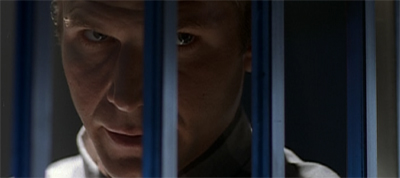
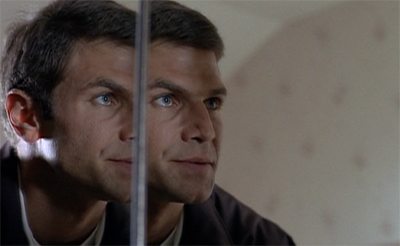
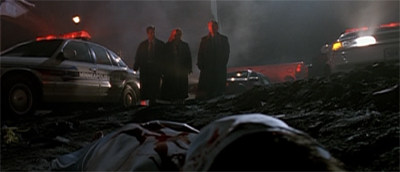

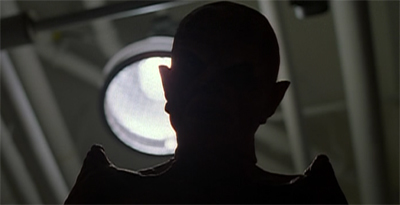
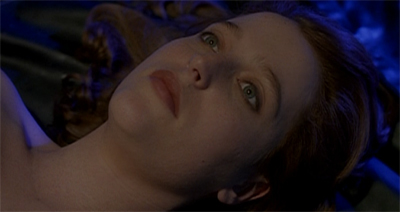
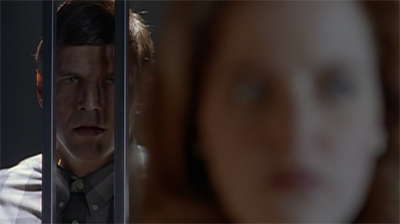


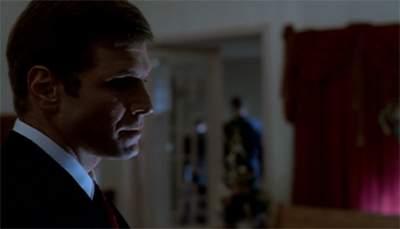
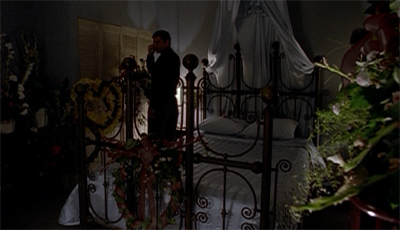
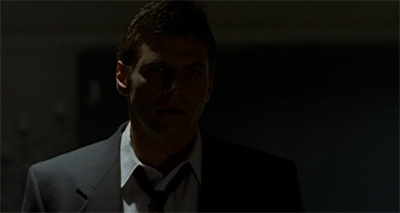


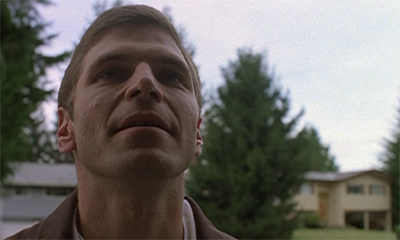
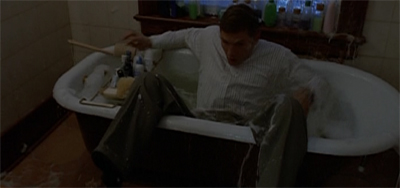
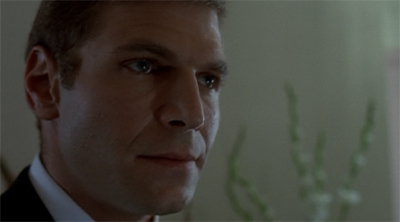





Leave a comment